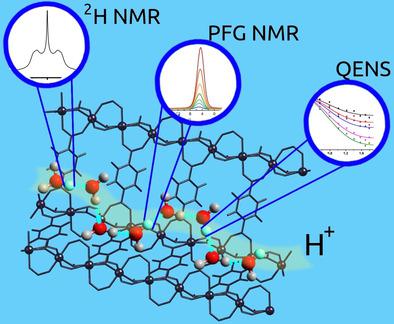当前位置:
X-MOL 学术
›
Chem. Rec.
›
论文详情
Our official English website, www.x-mol.net, welcomes your feedback! (Note: you will need to create a separate account there.)
Characterization of Proton Dynamics for the Understanding of Conduction Mechanism in Proton Conductive Metal-Organic Frameworks.
The Chemical Record ( IF 6.6 ) Pub Date : 2020-09-21 , DOI: 10.1002/tcr.202000072 Daniil I Kolokolov 1, 2 , Dae-Woon Lim 3 , Hiroshi Kitagawa 4
The Chemical Record ( IF 6.6 ) Pub Date : 2020-09-21 , DOI: 10.1002/tcr.202000072 Daniil I Kolokolov 1, 2 , Dae-Woon Lim 3 , Hiroshi Kitagawa 4
Affiliation

|
Proton conductivity has been traditionally investigated with various materials such as organic polymers, metal oxides, and other inorganic and organic compounds because of their potential application in the electrochemical devices. In particular, during the last decade, crystalline porous coordination polymers (PCPs) or metal‐organic frameworks (MOFs) have received considerable attention in recent years, as solid‐state proton conductors (SSPCs). To date, proton‐conductive MOFs have achieved high performance in proton conductivity (>10−2 S cm−1) with rational design strategies. In addition, there are dedicated efforts to define the conduction pathway and mechanism using various experimental tools. In this review, we focus on the characterization of proton conductivity and molecular dynamics in hydrated MOFs, with selected examples to provide an understanding of the overall conduction mechanism.
中文翻译:

质子动力学表征,用于了解质子导电金属有机骨架中的导电机理。
由于质子电导率在电化学装置中的潜在应用,传统上已使用各种材料(例如有机聚合物,金属氧化物以及其他无机和有机化合物)研究了质子传导率。特别是在过去的十年中,结晶质多孔配位聚合物(PCP)或金属有机骨架(MOF)作为固态质子导体(SSPC)近年来受到了相当大的关注。迄今为止,质子传导MOF在质子传导率方面已实现了高性能(> 10 -2 S cm -1)的合理设计策略。此外,还致力于使用各种实验工具来定义传导途径和机制。在这篇综述中,我们重点介绍了水合MOF中质子电导率和分子动力学的表征,并通过一些实例提供了对整体传导机理的理解。
更新日期:2020-11-16
中文翻译:

质子动力学表征,用于了解质子导电金属有机骨架中的导电机理。
由于质子电导率在电化学装置中的潜在应用,传统上已使用各种材料(例如有机聚合物,金属氧化物以及其他无机和有机化合物)研究了质子传导率。特别是在过去的十年中,结晶质多孔配位聚合物(PCP)或金属有机骨架(MOF)作为固态质子导体(SSPC)近年来受到了相当大的关注。迄今为止,质子传导MOF在质子传导率方面已实现了高性能(> 10 -2 S cm -1)的合理设计策略。此外,还致力于使用各种实验工具来定义传导途径和机制。在这篇综述中,我们重点介绍了水合MOF中质子电导率和分子动力学的表征,并通过一些实例提供了对整体传导机理的理解。


























 京公网安备 11010802027423号
京公网安备 11010802027423号